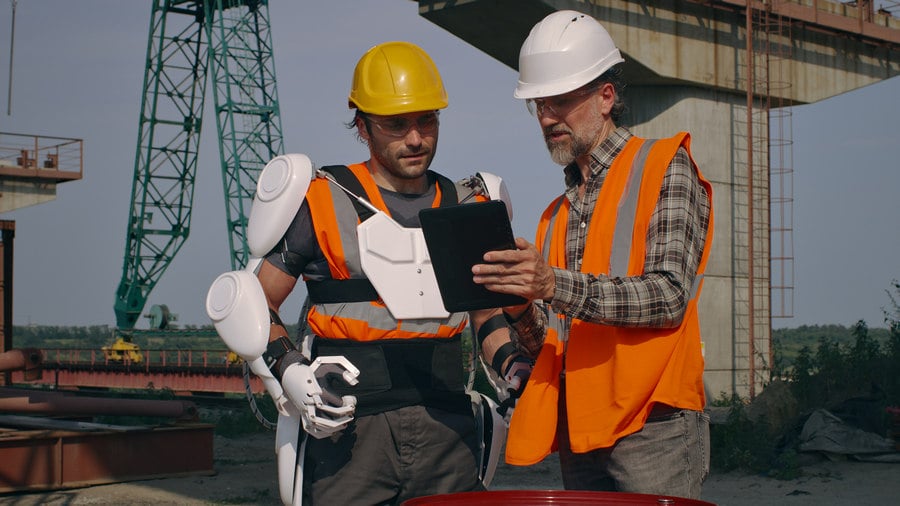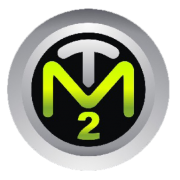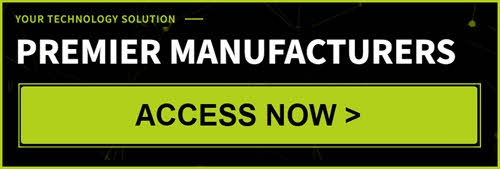
The business landscape is constantly evolving as new technologies emerge and customer behaviors change. For companies to succeed in this environment, it's crucial to regularly analyze the past and look to the future.
For example, here are products that have become popular in the last 10 years:
- Smart speakers like Amazon Echo and Google Home - These voice-activated speakers that can play music, provide information, control smart home devices, etc. didn't exist 10 years ago. The Amazon Echo was first released in 2014.
- Ridesharing apps like Uber and Lyft - While ridesharing existed before, Uber and Lyft really popularized and mainstreamed it starting around 2010.
- Video doorbells like Ring - Internet connected video doorbells that let you see who is at your door from your smartphone have become popular home security devices in the last 5-10 years.
- Smartwatches like Apple Watch - While basic wrist fitness trackers existed prior, the full touchscreen Apple Watch capable of notifications, apps, etc. debuted in 2015. Now many brands make smartwatches.
- Live streaming services like Twitch - Though YouTube existed, the rise of platforms dedicated to live streaming gaming, creative content, etc. is a more recent phenomenon in the last 5-10 years.
- Smart home devices - From smart thermostats to smart lights and plugs, the connected home filled with AI-powered devices didn't really exist 10 years ago.
- Air fryers - These popular kitchen appliances designed to "fry" food with less oil using convection heating weren't common 10 years ago. The first modern air fryer was sold in 2010.
- Streaming sticks like Roku/Fire stick - Affordable and easy ways to stream internet video to TVs weren't mainstream 10 years ago. Roku launched its first streaming stick in 2012.
- Electric scooters - Stand-up electric scooters from companies like Lime and Bird took off in popularity in 2017/2018.
- Dating apps like Tinder - While online dating existed, Tinder and its swiping interface first launched in 2012 and helped bring smartphone dating apps mainstream.
Future-thinking, here are some products experts predict could be popular 10 years from now:
- Autonomous vehicles - Self-driving cars are already being tested, and many experts predict they will be common on roads by 2030. This could disrupt the entire automotive and transit industries.
- Augmented/virtual reality headsets - AR and VR technology exists today but experts envision more sophisticated, mainstream headsets that could be used for gaming, work, social media and more.
- Smart glasses - Internet-connected glasses are being developed by companies like Google, Amazon, and others. They may offer information, camera, AR, and more.
- Plant-based meat - Alternatives to traditional meat like Impossible Burger and Beyond Meat are growing in popularity. In 10 years, they may be indistinguishable from actual meat.
- Smart home robots - Home robots like Amazon Astro could become more advanced and popular for helping with tasks, companionship, home security, etc.
- Digital currencies - Cryptocurrencies like Bitcoin and blockchain technology are still emerging. Mainstream adoption could occur in the next 5-10 years.
- Telemedicine - Virtual doctor visits via video chat rose during COVID-19. This could become the norm and expand healthcare access.
- Electric air taxis - Companies are developing electric-powered vertical take-off aircraft for quick, emissions-free air travel between cities. Limited services may start in the next 10 years.
- Exoskeletons - Wearable robotic devices that enhance mobility and strength for the elderly, disabled or workers may hit mainstream in the next decade.
- Neural implants - Implants to enhance brain function or treat disorders are in early research, but promising advances in the next 10 years could make them transformative.
To continue our future-thinking, here are suggestions for types of electronics that could be promising areas for a manufacturing company to focus on in the next 10 years:
- Components for autonomous vehicles - Sensors, cameras, radar, lidar, and chipsets to enable self-driving functionality. This will be a major growth market as autonomous cars gain adoption. Partnering with AV companies would be advisable.
- 5G infrastructure and devices - 5G networks are rolling out now and will continue over the next decade. Manufacturing 5G gear like small cells, routers, modems and antennas could be valuable. Consumer devices like phones and tablets will also need 5G chipsets.
- IoT devices - Internet of Things connected devices are increasing rapidly. Manufacturing affordable, smart IoT devices for homes, businesses, agriculture, fitness, etc. could align well with market demand.
- AR/VR headsets and accessories - Developing components like displays, sensors, and optics for augmented and virtual reality headsets as the market matures.
- Advanced robotics - Robotics are automating many industries. Manufacturing the motors, sensors, vision systems, grippers and artificial intelligence modules to power next-gen robotics.
- Quantum computing parts - Quantum computing is an emerging frontier. Supplying key superconducting, ion trap, and photonic parts could be impactful.
- Flexible/foldable displays - Curved and folding screens are a growing trend in devices. Manufacturing flexible OLED or LED displays could attract consumer electronics customers.
- Smart home devices - Continuing to build Wi-Fi/Bluetooth-enabled smart appliances and controllers for home automation systems.
- Battery technology - Better battery life and charging is crucial. Manufacturing batteries with new chemistries and nanomaterials could help energy storage.
The key is focusing on high-growth technologies and building strategic partnerships with leading innovators in those fields. Staying on the cutting edge can help secure a solid manufacturing business future.
Here are tips on how organizations can learn from the past while anticipating future trends:
Examine New Product Adoption Cycles
Look back over the last 5-10 years in your industry. Identify new products, services or capabilities that emerged during that timeframe. Analyze the adoption life cycle - how rapidly they were adopted and what pace of change occurred. Understanding these adoption cycles for recent innovations can help anticipate cycles for future products.
Conduct Technology Forecasting
Based on current research and expert projections, make informed predictions on what technologies are likely to become mainstream in your industry in the next 10 years. Some examples are autonomous vehicles, virtual reality, and smart home devices. Strategic planning should account for these potential tech disruptions.
Partner With Innovators
Don't just monitor new technologies, but actively connect with innovative companies, startups, researchers, and thought leaders that are inventing the future. Form strategic partnerships to collaborate on cutting-edge products and capabilities. This provides valuable perspective.
Build Organizational Agility
Companies that can rapidly change direction and business models have an advantage. Develop processes to scan the horizon for emerging trends, pilot new ideas quickly, and scale up successful concepts. A nimble organization is better positioned to capitalize on future opportunities.
Invest in Capabilities
Consider the core capabilities that allowed your company to successfully adapt to new technologies in the past. Strengthen those muscle memories through leadership development, employee training and organizational learning. These distinctive capabilities are often transferable to new challenges.
Balancing anticipation of the future with analysis of the past is crucial to outmaneuver competitors. Companies that take the time to methodically study adoption cycles, forecast technological shifts, collaborate with innovators, build agility, and invest in capabilities will have the insight and adaptability needed to thrive.
Important: The Pace of Change
Measuring the pace of change is an important factor when analyzing how new technologies and products were adopted in the past and making predictions for the future. Advances in AI, machine learning, robotics, and other technologies have increased the pace of change tenfold. By 2025, we estimate that 50 billion devices will be connected to the Industrial Internet of Things (IIoT), while 70 percent of manufacturers are expected to be using digital twins regularly.
According to Forbes, by 2050, IoT technology will be in 95% of electronics for new product designs. And by 2050 it is expected to have everything connected to the cloud and to the internet. According to Business Insider, Space tourism could be feasible in 2050, but likely only for the very wealthy.
How you can measure the pace of change:
- Adoption rate - Look at how quickly a new product or technology reached key adoption milestones like 10%, 50% and 90% market penetration. Faster adoption rates signal rapid change.
- Sales growth metrics - Track annual or quarterly sales growth rates for new products. Higher growth rates indicate faster pacing.
- Price declines - New technologies often see rapid price declines as adoption scales. Analyze the rate of price reduction over time. Faster declines mean faster change.
- Product life cycles - Measure the length of time from introduction to peak sales to decline. Shorter cycles imply a faster pace.
- Market share shifts - Look at how quickly market share shifted from established players to new innovations. Faster shifts in share point to swifter change.
- Regulation cycles - New categories often require new regulations. Monitor the pace of regulatory changes and updates as a metric.
- Standard adoption - How rapidly industry standards coalesced around new technologies is a good indicator of the pace of change.
- Cultural integration - Some innovations become part of the cultural lexicon rapidly. Analyzing how quickly new technologies reached mass culture is insightful.
Tracking these metrics over time for recent innovations gives organizations a quantified sense of the pace of change. Applying similar metrics looking forward can help anticipate the speed of disruption. Combining adoption pace analysis with technology forecasting is important for strategic planning.
This future-thinking mindset will lead you to new prototypes and unfamiliar projects. Please call on us to help you work through future conundrums. We enjoy the challenges and have 25 years of developing contacts around the world.
Get our complete list of manufacturers >
Being incredibly connected to the Northwest market, we can put people and companies together to create great synergy, a strong network and trusted solutions.





